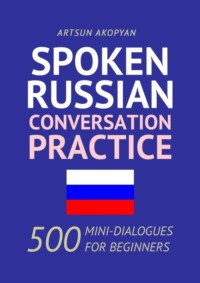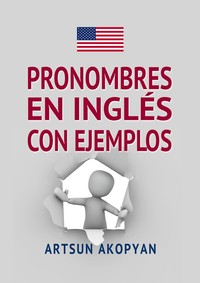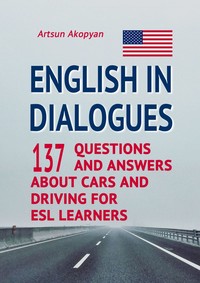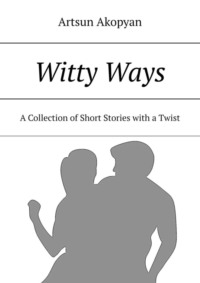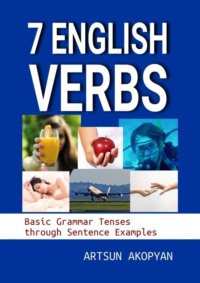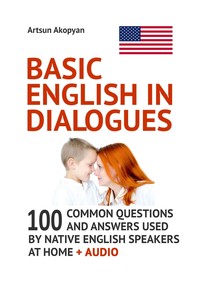
Полная версия
English Pronouns and Possessive Adjectives

English Pronouns and Possessive Adjectives
Artsun Akopyan
© Artsun Akopyan, 2020
ISBN 978-5-0050-6992-4
Created with Ridero smart publishing system
Foreword
The illustrated tutorial “English Pronouns and Possessive Adjectives” contains all of the pronouns that are used in spoken English, namely personal, demonstrative, possessive, reflexive, indefinite, reciprocal, interrogative, relative pronouns, plus 4 demonstrative adjectives and 7 possessive adjectives.
You will learn how to use pronouns in sentences through examples, illustrations and exercises, rather than theory. This handbook is for beginners and intermediate learners of English as a second language (ESL) / English as a foreign language (EFL) who want to improve their English grammar and vocabulary.
About the Author
Artsun Akopyan is a writer and freelance translator based in Russia. He worked at a high school teaching Russian and at a university teaching English. His publications include books for English language learners, short stories and articles, translations of fiction and nonfiction books from English into Russian.
What is a Pronoun?
Pronouns are words used instead of nouns and noun phrases.
For example, I, you, he, she, himself, herself, this, that, who, whose, someone, and so on.
List of Pronouns and Possessive Adjectives Used in This Book
Personal subject pronouns: I, you, he, she, it, we, you, they.
Personal object pronouns: me, you, him, her, it, us, you, them.
Demonstrative pronouns and adjectives: this, that, these, those.
Possessive adjectives (determiners): my, your, his, her, its, our, their.
Possessive pronouns: mine, yours, his, hers, its, ours, theirs.
Reflexive pronouns: myself, yourself, himself, herself, itself, ourselves, yourselves, themselves, oneself.
Indefinite pronouns: one, ones, no one, nobody, none, nothing, some, any, somebody, anybody, someone, anyone, something, anything, everybody, everyone, everything, both, each, all, either, neither, another, other, others, many, few, little, much, plenty, several, less, more, most.
Reciprocal pronouns: each other, one another.
Interrogative pronouns: who, whom, whose, which, what, whoever, whichever, whatever.
Relative pronouns: that, who, whom, whose, which, whoever, whatever, whichever.
I, you, he/she/it, we, you, they
The words I, you, he, she, it, we, you, and they are personal subject pronouns.
I am

Read and translate the examples into your language:
I am a man.
I am a woman.
You are
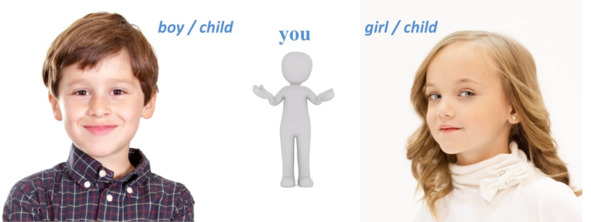
You are a boy.
You are not a man.
You are a child.
You are a girl.
You are not a woman.
You are a child, too.
He / she is
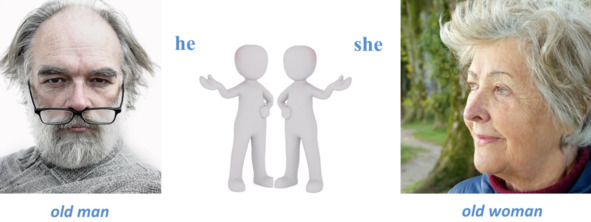
He is an old man.
He is not a boy.
He is not a child.
She is an old woman.
She is not a girl.
She is not a child.
It is

It is milk.
It is a bottle.
It is a milk bottle.
It is a cat.
It is a baby.
We are
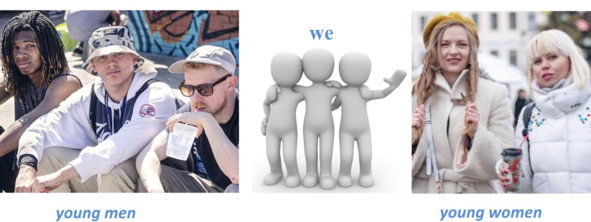
We are men.
We are young men.
We are not old men.
We are women.
We are young women.
We are not old women.
You are
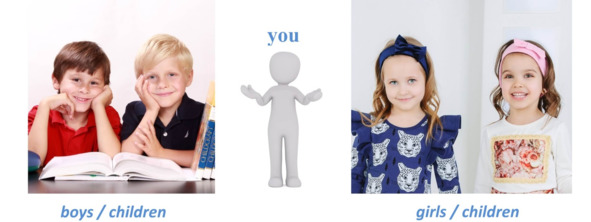
You are boys.
You are girls.
You are boys and girls.
You are children.
You are not men and women.
They are

They are people.
They are young and old.
They are young and old people.
They are men, women and children.
Revision: Units 1—7
Complete the sentences.
1. I ____ a man.
2. She ____ a woman.
3. She ____ an old woman.
4. I ____ a woman.
5. It ____ milk.
6. They ______ people.
7. You ______ children.
8. He ____ an old man.
9. ______ are a boy.
10. ____ is a bottle.
11. You ______ girls.
12. It ____ a baby.
13. They ______ young and old.
14. He ____ not a boy.
15. ______ are not a man.
16. You ______ a child.
17. You ______ not men and women.
18. We ______ young women.
19. It ____ a milk bottle.
20. ______ are a girl.
21. She ____ not a girl.
22. We ______ young men.
23. You ______ boys.
24. It ____ a cat.
25. You ______ not a woman.
26. He ____ not a child.
27. You ______ boys and girls.
28. We ______ not old men.
29. She ____ not a child.
30. They ______ young and old people.
31. We ______ not old women.
32. They ______ men, women and children.
Answers.
1. I am a man.
2. She is a woman.
3. She is an old woman.
4. I am a woman.
5. It is milk.
6. They are people.
7. You are children.
8. He is an old man.
9. You are a boy.
10. It is a bottle.
11. You are girls.
12. It is a baby.
13. They are young and old.
14. He is not a boy.
15. You are not a man.
16. You are a child.
17. You are not men and women.
18. We are young women.
19. It is a milk bottle.
20. You are a girl.
21. She is not a girl.
22. We are young men.
23. You are boys.
24. It is a cat.
25. You are not a woman.
26. He is not a child.
27. You are boys and girls.
28. We are not old men.
29. She is not a child.
30. They are young and old people.
31. We are not old women.
32. They are men, women and children.
Me, you, him, her, it, us, you, them
The words me, you, him, her, it, us, you, and them are personal object pronouns.
Me

it’s = it is
It’s me. (informal English, modern use)
It is I. (formal English, old use)
(It’s me. = It is I.)
Look at me!
Can you see me?
Can you see me in the mirror?
Can you recognize me?
Can you recognize me in the mask?
You
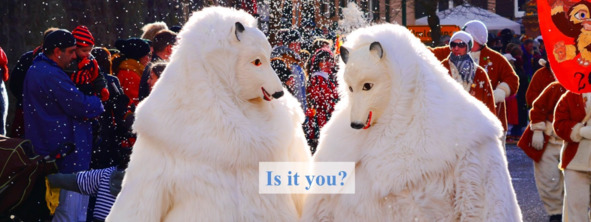
Is it you, Jack?
I can see you.
I can hear you.
I cannot recognize you.
I can see and hear you, but I cannot recognize you.
Yes, it is you!
Him

Is it Batman?
Yes, it is him! (informal English)
Is it King Arthur?
Yes, it is he. (formal English)
(it is him = it is he)
It is Batman.
Can you compete with him?
Yes. I can beat him.
It is King Arthur.
Can you disobey him?
Yes, I can argue with him.
Her

Who is the bride? Is it Maria?
Yes, it’s her. (informal English)
Is it Queen Elizabeth?
Yes, it is she. (formal English)
No, it is not she!
(it is her = it is she)
The woman on the left is a bride.
Do you like her?
I admire her.
The woman on the right is not Queen Elizabeth.
She does not look like her.
Ask her who she is!
It
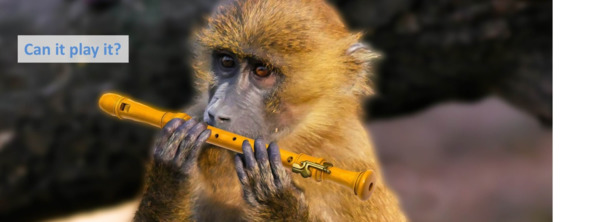
It is a cute monkey.
Do you like it?
I like it!
The monkey is holding a flute.
Can the monkey play it?
Can it play it?
The monkey cannot play the flute.
The monkey cannot play it.
It cannot play it.
Us

It’s us, your friends! (informal English)
It is we, the King and the Queen. (formal English)
(it’s us = it is we)
Look at us!
Can you recognize us?
You know us very well.
Them
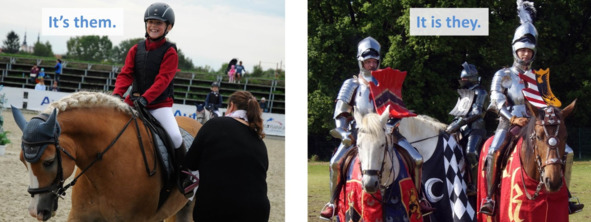
Look at the horse and the boy.
It’s them who are the winners! (informal English)
Behold the knights!
It is they who are the winners! (formal English)
(it’s them = it is they)
I know them.
Do you support them?
I am a fan of them.
Revision: Units 8—14
Choose the correct word in parentheses.
1. It’s (me, I). (informal English)
2. It is (me, I) (formal English)
3. Look at (me, I)!
4. Can you see (me, I) in the mirror?
5. Can you recognize (me, I) in the mask?
6. I can see and hear (you, me, I), but I cannot recognize you.
7. It is (he, him)! (informal English)
8. Can you disobey (he, him)?
9. Yes, I can argue with (he, him).
10. It is (she, her). (formal English)
11. Do you like (she, her)?
12. I admire (she, her).
13. She does not look like (she, her).
14. Ask (she, her) who she is!
15. It is a cute monkey. Do you like (him, her, it)?
16. It’s (we, us), your friends! (informal English)
17. Look at (we, us)!
18. Can you recognize (we, us)?
19. It is (they, them) who are the winners! (formal English)
20. I know (they, them).
21. Do you support (they, them)?
22. I am a fan of (they, them).
Answers.
1. It’s me.
2. It is I.
3. Look at me!
4. Can you see me in the mirror?
5. Can you recognize me in the mask?
6. I can see and hear you, but I cannot recognize you.
7. It is him!
8. Can you disobey him?
9. Yes, I can argue with him.
10. It is she.
11. Do you like her?
12. I admire her.
13. She does not look like her.
14. Ask her who she is!
15. It is a cute monkey. Do you like it?
16. It’s us, your friends!
17. Look at us!
18. Can you recognize us?
19. It is they who are the winners!
20. I know them.
21. Do you support them?
22. I am a fan of them.
This, that, these, those
The words this, that, these and those are demonstrative pronouns. They can also be used as demonstrative adjectives. Demonstrative pronouns replace the noun, while demonstrative adjectives are followed by the nouns.
This/that woman

This is a woman. (demonstrative pronoun)
The woman is here.
She is here.
This woman is here. (demonstrative adjective)
That is another woman. (demonstrative pronoun)
The woman is there.
She is there.
That woman is there. (demonstrative adjective)
This/that dog
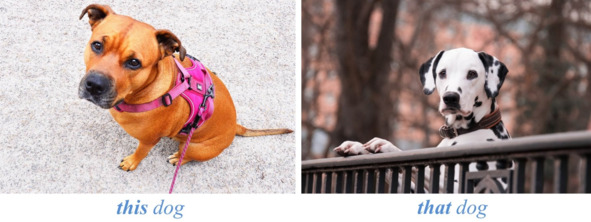
This is a dog.
The dog is here.
It is here.
This dog is here.
That is another dog.
The dog is there.
It is there.
That dog is there.
This/that ball

This is a ball.
The ball is here.
It is here.
This ball is here.
That is another ball.
The ball is there.
It is there.
That ball is there.
These/those people

These are people.
Two people are nearby.
They are running.
These people are running.
Those are two other people.
They are far away.
They are walking.
Those people are walking.
These/those horses
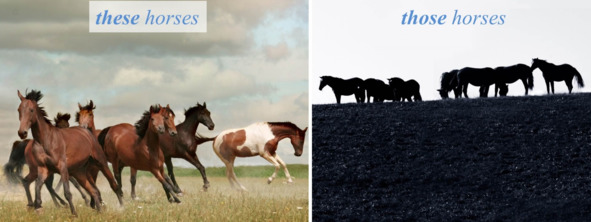
These are horses.
The horses are nearby.
They are running.
These horses are running.
Those are other horses.
The horses are far away.
They are standing.
Those horses are standing.
These/those books

These are books.
The books are here.
They are on the table.
These books are on the table.
Those are other books.
The books are there.
They are on the shelves.
Those books are on the shelves.
Revision: Units 15—20
Use this, that, these or those to complete the sentences.
1. __________ ball is here.
2. __________ people are running. They are nearby.
3. __________ people are walking. They are far away.
4. __________ dog is there.
5. __________ horses are running. They are nearby.
6. __________ woman is here.
7. __________ ball is there.
8. __________ horses are standing. They are far away.
9. __________ dog is here.
10. __________ books are on the table. They are here.
11. __________ books are on the shelves. They are there.
12. __________ woman is there.
Answers.
1. This ball is here.
2. These people are running. They are nearby.
3. Those people are walking. They are far away.
Конец ознакомительного фрагмента.
Текст предоставлен ООО «ЛитРес».
Прочитайте эту книгу целиком, купив полную легальную версию на ЛитРес.
Безопасно оплатить книгу можно банковской картой Visa, MasterCard, Maestro, со счета мобильного телефона, с платежного терминала, в салоне МТС или Связной, через PayPal, WebMoney, Яндекс.Деньги, QIWI Кошелек, бонусными картами или другим удобным Вам способом.





